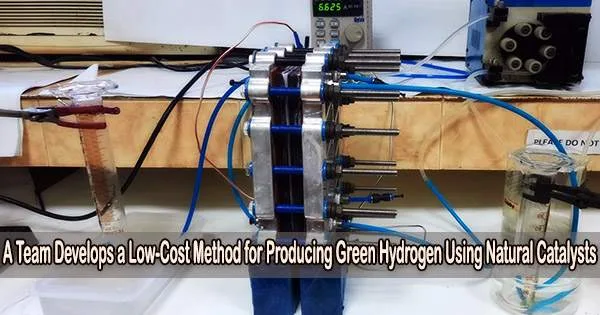Swansea and Grenoble experts have collaborated to create a workable method for producing green hydrogen using long-lasting catalysts.
The researchers are now hoping that their discovery will be a significant step in making green hydrogen production easier, more accessible, and more scalable.
Dr. Moritz Kuehnel, senior lecturer in Swansea University’s chemistry department, said: “In our work we use natural enzymes hydrogenases to generate green hydrogen using sunlight. Unlike synthetic catalysts which are based on precious metals like platinum, hydrogenases contain only earth-abundant elements such as iron and nickel. However, these enzymes are very sensitive and quickly deactivate when exposed to air, making their practical use near impossible.”
The team has now created specially designed solvents that allow hydrogenases to operate in air. They become more active and stable by just soaking them in these solvents rather than water, making it possible to effectively employ them to produce hydrogen in air.
This work is an inspiring example of how combining the expertise of multiple partners in an international collaboration can lead to ground-breaking research advances.
Dr. Alan Le Goff
Dr. Christine Cavazza, senior scientist at CEA Grenoble, added: “We integrated synthetic nanoparticles with natural enzymes into so-called hybrid materials, which combine the best of both worlds to achieve new, superior functionality. TiO2 nanoparticles are excellent at using sunlight to generate charges and hydrogenases are extremely efficient in using these charges to generate green hydrogen.”
“Combining the two therefore allows for the efficient generation of green hydrogen from sunlight, something none of the separate components are capable of.”
Swansea University’s expertise in photocatalysis, solvent design, and its commitment to providing workable solutions to challenging problems were combined in this study with expertise from the Alternative Energies and Atomic Energy Commission (CEA) and University Grenoble Alpes (UGA) in the extraction of natural enzymes and their use in the conversion of renewable energy sources.
The collaboration came about as the result of Swansea’s strategic partnership with UGA. The researchers’ findings have just been published by international journal Angewandte Chemie.
Dr. Alan Le Goff, senior scientist at CNRS Grenoble said: “This work is an inspiring example of how combining the expertise of multiple partners in an international collaboration can lead to ground-breaking research advances.”
Green hydrogen is required as a fuel for the decarbonization of transportation, particularly heavy-duty vehicles (HGV), long-haul aviation, the marine industry, especially fertiliser manufacturing, and the energy sector.
However, the expense of manufacturing green hydrogen now prevents its widespread usage, which is why the future relevance of this research is so great.
Electrolysers and fuel cells can be made more affordable to build and operate by using environmentally friendly catalysts like hydrogenases rather than pricey platinum. Additionally, it reduces reliance on imports, which can be disrupted by outside forces.
















